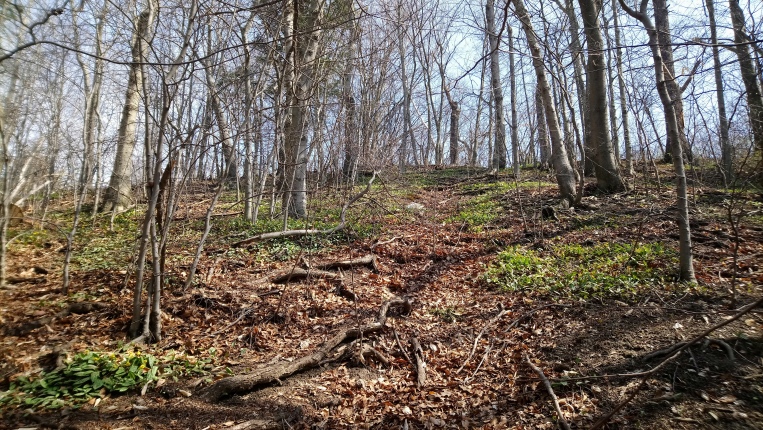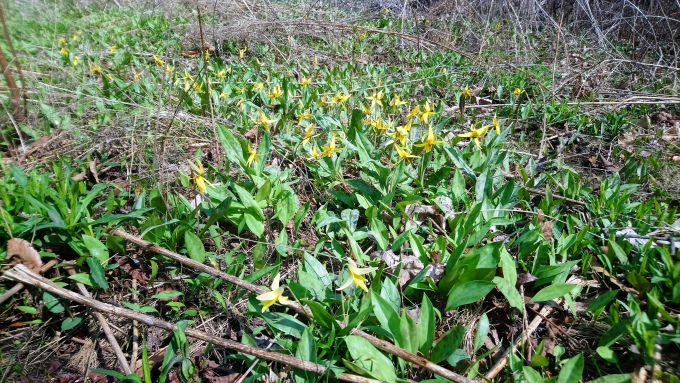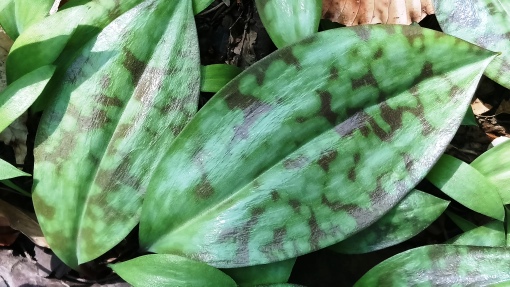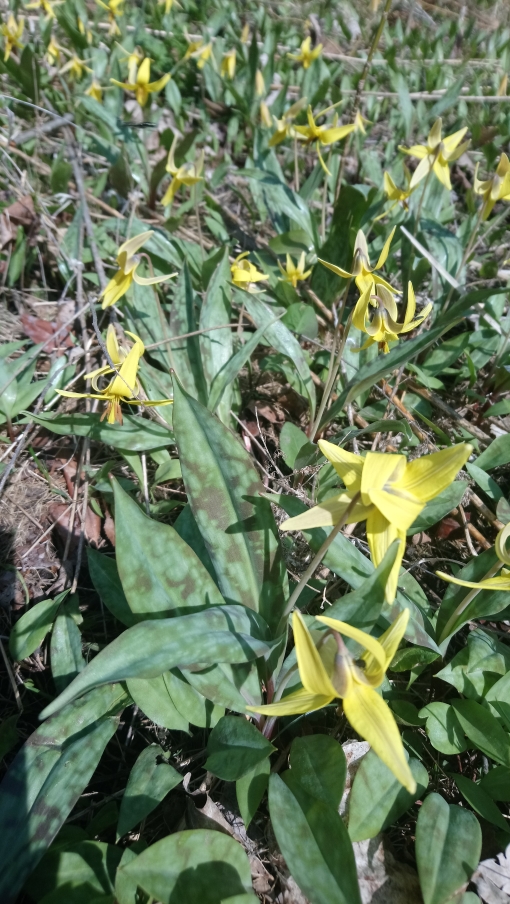It’s already mid-May here in Southern Ontario and the trees are only just beginning to bud. Without the canopy of leaves overhead there is plenty of light reaching the forest floor. Just as the early bird gets the worm, there are a few opportunistic plants taking advantage of this early light by being the first to arrive. These plants pop up and flower very early in the season and by the time the leaves appear in the trees over head, they are gone. Of course I am generally only concerned with the ones that I can eat.
My favorite early spring time edible has to be the Trout Lily, Erythronium americanum. These can be found in the moist soils of deciduous forests where plenty of light reaches the forest floor in the early spring. This hill along a local trail was covered in Trout Lily and receiving plenty of afternoon sun:


In my area around Toronto, the Trout Lily seems perfect for picking around the end of the first week of May, but this will of course vary with the weather. Personally, my foraging of this plant is generally limited to eating a few out of hand when I’m hiking. The leaves are soft, moist, have a very nice delicate and somewhat sweet flavour. They are also easy to identify as there isn’t much else around.
The smooth, toothless leaves are light green, mottled with some dark green, almost brown areas, when they are perfect to pick. As they mature they become a solid light green and will begin to lose flavour.


Their bell-like yellow flowers also help make them easy to identify.
It is generally recommended that you cook the leaves and many authors warn of their emetic effects, that is, they could cause you to vomit. I have never eaten enough of them to find out if that is true. You can also go a step further and dig up its roots to find a very small bulb-like corm. These should be boiled for 20 or more minutes and served with butter. The corms are relatively deep in the soil for a plant of this size and are delicate enough that you can’t just partially dig and pull or you will lose them. You will have to dig deep enough to loosen the corm if you want to be putting a few in your dinner pot.
Here are two great resources to bring on your hikes to help you with plant identification:
• Forest Plants of Central Ontario; Lone Pine Publishing
• Peterson Field Guides – Edible Wild Plants, Eastern/Central North America
As with any wild plant:
• harvest/consume only those that you can identify positively
• when in doubt ask an expert in the area
• Learn to distinguish from any similar poisonous plant (if applicable)
• Sample sparingly at first to gauge individual sensitivities/allergies
• Understand which parts of which plants may be consumed as many edible plants have toxic parts/structures
• Harvest only when/where abundant
• Do not harvest plants that are endangered or in need of protection
Happy Trails!


You must be logged in to post a comment.